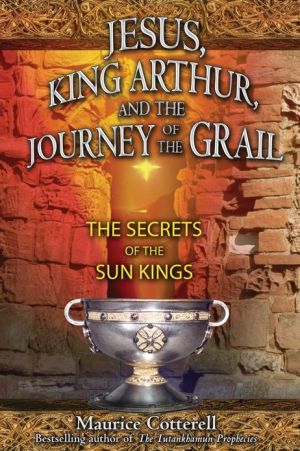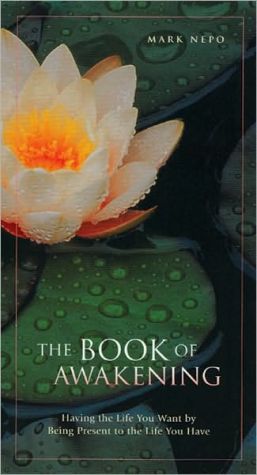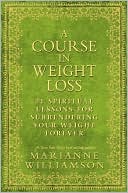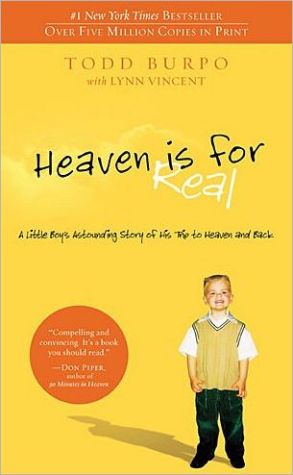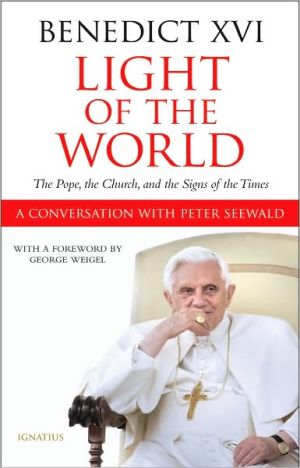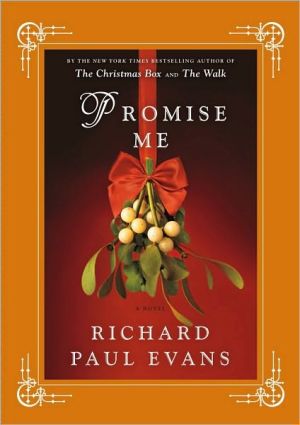Jesus, King Arthur, and the Journey of the Grail: The Secrets of the Sun Kings
Reveals how the super-science of the sun and the higher orders of spirituality are concealed and contained in the Holy Grail\ • Connects the discovery of 4,000-year-old Celtic mummies in China with the transmission of this ancient knowledge\ • Documents the truth of the Holy Grail’s connection with King Arthur and Joseph of Arimathea\ • Confirms the pedigree of the Grail using secret information from the Mayan Pyramid of Inscriptions in Mexico and the Gateway of the Sun in Peru\ Using the...
Search in google:
Maurice Cotterellfollows the migration of the Celts 4,000 years ago from Asia, across Europe, to Ireland. His account of this epic journey together with his knowledge of the secret codes of the Celts help him to identify and locate the Holy Grail, the actual cup used by Christ and his disciples at the Last Supper.
from Chapter Five: The Holy Grail\ The Ardaugh Chalice\ The Mystery of the Script\ Below each of the studs on the bowl of the Ardaugh Chalice is carved the name of one of the twelve Apostles. As noted earlier, the names are written in insular majuscule script, persuading experts that the cup was engraved by monks at Lindisfarne. But the names of the Apostles in the Lindisfarne Gospels are written in Latinised Greek whereas on the chalice they appear in Latin. Lindisfarne was established by the Irish monk St. Aiden, who, like St. Patrick, preferred not to speak Latin (Patrick preferred his Celtic Mayo-Irish). If the chalice was engraved by the monks of Lindisfarne, why did they not use the same language and convention on the chalice as they used in the Lindisfarne Gospels? Why use Latin on the cup and Latinised Greek in the Lindisfarne Gospels?\ The Mystery of the Names\ The twelve names as they appear on the bowl also raise questions. The name of Judas Iscariot, the so-called Disciple who betrayed Jesus, is missing, which is understandable. But the name of the Apostle who replaced him, Mathius, is not included. If the monks of Lindisfarne had engraved the cup, they would have known that Mathius had replaced Judas—given that the Lindisfarne Gospels are based on the Latin Vulgate version of the Bible which contains the Acts of the Apostles naming Mathius as the replacement. Instead, the twelfth name on the chalice is that of St. Paul, the one-time Roman Saul, who preached around the Mediterranean during Roman times. The earliest known version of the New Testament comes from the early Peshitto manuscript precisely dated as being written in AD 464, after the death of King Arthur. King Arthur, therefore, who died in around AD 450, would not have known that Mathius had replaced Judas. Arthur, however, having lived through the Roman occupation of Britain, would have been aware of the works of St. Paul—the favourite of the Romans after the time of Constantine—and therefore would more likely have believed that the popular Paul had taken the role of the twelfth Apostle.\ The Mystery of the Grammar\ A linguistic scholar has pointed out that the names contain grammatical errors: ten names appear in the possessive sense but two—the Latin versions of Tatheus and Simon—appear in the nominative. St. Aiden may not have favoured Latin but he was a scholar, as the Lindisfarne Gospels testify. It is unlikely therefore that educated clerics engraved the chalice. If clerics did not engrave the chalice, then who did?\ The Secrets of the Carving\ The incorrect names of the Apostles support the view that it was Arthur in AD 453 who incorrectly carved the name of Paul on the chalice and not clerics in AD 698. Arthur would also have had no axe to grind over the use of Latin, unlike the monks, who were at loggerheads with Rome over the dating of Easter and the structure of the Church. He was no educated scholar and therefore more likely to make grammatical errors. And the carving of the names on the cup is rough and crude as though it has been done with the end of nail—an instrument intimately associated with the Crucifixion of Christ. It is patently clear that whoever carved the cup wished to convey the fact that they did not possess the skill of whoever manufactured it. But whoever it was, they knew it was the Holy Grail and engraved it to let others know.\ The Secrets of the Dragons\ The engraving has more to say; it continues in loops around the solar crosses and beneath the handle escutcheons taking the shape of two conjoined dragon heads. This “mark of the Grail”—two anthropomorphic dragon-angels—also appears either side of the Grail shown in the fifteenth-century manuscript. Two dragon heads are known, from archaeological evidence, to represent Christ and the Crucifixion, further supporting the association of the chalice with the event. Figure 53 shows an example of a tau cross featuring a scene of the Crucifixion with Christ on the cross together with Mary and St. John inside a solar-cross envelope inside the conjoined belly of two dragons.\ Following the Crucifixion, the Greek letter t, or tau, was associated with the cross. The dragons represent sacrifice, after the ancient custom of Silene where the firstborn of every family was (legend has it) sacrificed to a dragon that lived in a swamp. Jesus was, likewise, sacrificed on the cross.\ Figure 54a shows another example of a tau cross, this time with Mary and the baby Jesus inside the circular Sun, which carries magnetic loops around the perimeter, again inside the belly of two conjoined dragons. Venus appears either side of the Sun, as a small white circular stud. Figure 54b shows the lid of Lord Pacal at Palenque and figure 54c shows a detailed section of the lid featuring a tau cross, meaning that Lord Pacal is also associated with the tau cross and the Crucifixion of Jesus.\ According to Malory, the staff carried by the time-travelling magician Merlin was crowned with a tau cross identical to the one in figure 53. Merlin was hence aware of the meaning of the tau cross and its association with Christ and must have therefore instructed Arthur to carve the dragons on the Holy Grail to authenticate its provenance.\ No one but Arthur or his knights would have engraved two conjoined dragons on the chalice to acknowledge the Crucifixion of Jesus and celebrate the cup’s discovery because no one but Arthur or his knights have been featured worshipping the Grail flanked by two dragons. And no one but Arthur or his knights have been featured at the Round Table worshipping the Grail radiating light—from the quartz crystal in the foot-cone.
AcknowledgementsIllustration Credits1 The Celts The Mystery of the Blonde-haired Mummies The Euro-Celtic Heartland The Mystery of the Hallstatt Swastikas The Spiritual Secrets of Venus The Tomb of the King of Hochdorf Celtic Trade Glauberg La Tène The Gundestrup Cauldron The March of the Romans The Druids2 Who Wrote the Bible? The Old Testament The New Testament The Lost Meaning of the Celtic Spiral After the Crucifixion The Appearance of St. Paul Collation of the New Testament Collapse of Roman Rule St. Patrick3 The Monasteries Havens of Refuge The Works of Angels Decoding the Celtic Designs--Continuous-line Drawing Decoding the Celtic Knot-work Patterns4 A Land Without a King The Arthurian Legends The Pre-Raphaelites The Secrets of the Tara Brooch The Ardagh Hoard5 The Holy Grail The Ardagh Chalice Construction of the Grail General Description The Secrets of the Foot-Cone The Serets of the Mesh-mat Panels The Secrets of the Bowl and the Bowl Girdle The Meaning of the Missing Stud The Mystery of the Script The Mystery of the Names The Mystery of the Grammar The Secrets of the Carving The Secrets of the Dragons The Secrets of the Maze-like Pattern Decoding the Maze-like Pattern The Secrets of the Quartz Crystal The Secrets of the Swastika Panels The Secrets of the Yellow Rim and the Nails The Secrets of the Handle Escutcheon Plates The Derrynaflan Hoard The Copycat Monks Conclusion6 The Secret of the GrailThe First Picture of God Whom Does the Grail Serve?Appendix One: Decoding the Viracocha Transformer The Secrets of TiahuanacoAppendix Two: Secrets of the Ancients Why and How They Encoded Their Secrets into Their Treasures Encoding Information Using Pictures Encoding Information Using Numbers How the Soul Gets to Heaven The Mechanism of Soul TransmigrationAppendix Three: The Sun as the Feathered SnakeAppendix Four: Calculation of the Sunspot Cycle Using Sacred GeometryNotesBibliographyIndex
\ Lesley Crossingham"It is clear that until science can meet spirituality, embrace metaphysics, and the deeper wisdom of "meaning," we will remain ignorant of the deep wisdom of the ancients. This wisdom can be found in Maurice Cotterell's insightful and amazing book."\ \ \ \ \ From the Publisher\ "It is clear that until science can meet spirituality, embrace metaphysics, and the deeper wisdom of "meaning," we will remain ignorant of the deep wisdom of the ancients. This wisdom can be found in Maurice Cotterell's insightful and amazing book."\ \
